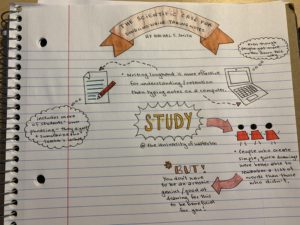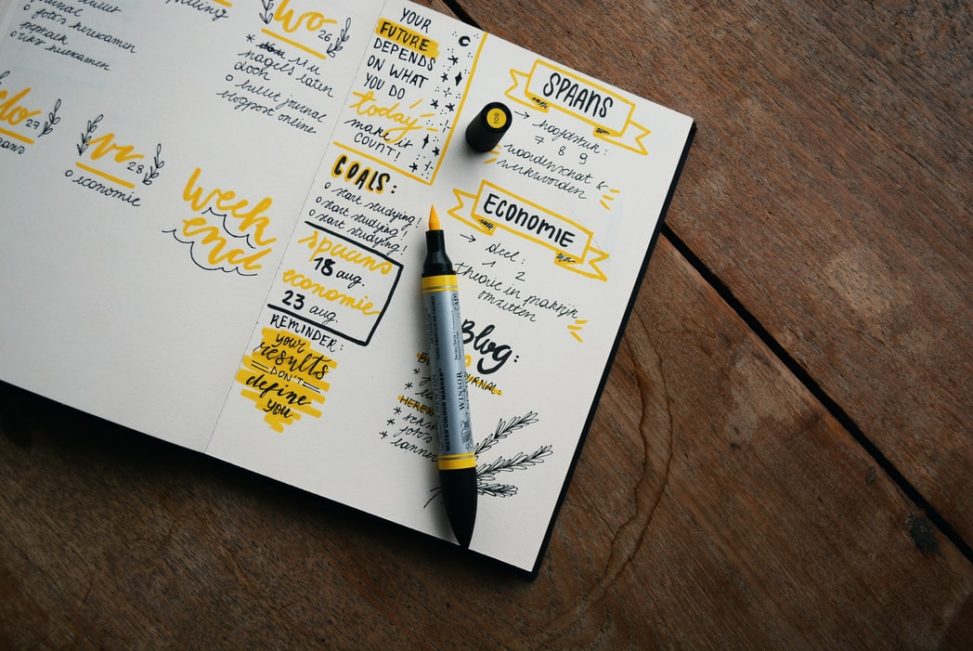In a nutshell, sketchnoting is a note-taking method that can help learners retain and conceptualize information better. It involves writing words, facts and numbers down on paper and adding in doodles simultaneously or at a later time to serve as a visual element. It should be noted as well that sketchnoting can be used beyond the classroom in meetings, conferences or presentations for example. To back up the effectiveness of sketchnoting, several studies have been conducted to demonstrate that taking notes with pen and paper leads to better recall than taking notes with a laptop.

My Warm-Up Doodles for EDCI 336
One huge benefit of sketchnoting from my perspective is the accessibility of it. All you need is a pen/pencil and a piece of paper. One potential issue that might impinge upon a person’s desire to do sketchnoting could be their perception of themselves as “bad drawers”. Although the effectiveness of sketchnoting isn’t reliant on one’s artistic ability, it still could be a mental barrier for those who believe their artistic talents aren’t sufficient for the task.

My Attempt at Sketchnoting in EDCI 336
Personally, I have gone through high school, my undergrad and my master’s degree taking mainly written long-hand notes. I enjoy trying out different pens (mostly purple ones), but I’m not really someone who enjoys adding illustrations or doodles in the margins. Rather, I tend to only doodle when I feel extremely bored with the lesson (and those doodles are often unrelated to the course content).
When I reached university, I found that in some of my courses (especially history, my minor) I struggled to write all the information down by hand. I ended up switching to typing my notes on my laptop in quick bullet points to keep up with the volume of information being introduced to me in a given lecture. This is perhaps the biggest downside I perceive with sketchnoting: it takes more time. I think it would be difficult to implement this type of notetaking strategy in classes where you struggle to keep up with what the teacher is saying. That being said, usually high school level courses aren’t quite as content-heavy or delivered at the same speed as university lectures. Thus, sketchnoting may prove more doable for a high school level learner. I also want to note that in my university French classes, I had more than enough time to write all my notes down by hand. So I think that the feasibility of this technique might also be dependent on the subject, as well as the level of education.
If you are interested in finding out more about Sketchnoting, here are a few more articles on the subject:
Sketchnoting: An Analog Tool in the Digital Age by Robert Dimeo
The Art of Visual Notetaking by Walter Foster
How to Start Sketchnoting by Veronica Erb
Photo by Estée Janssens from Unsplash.

Leave a Reply
You must be logged in to post a comment.